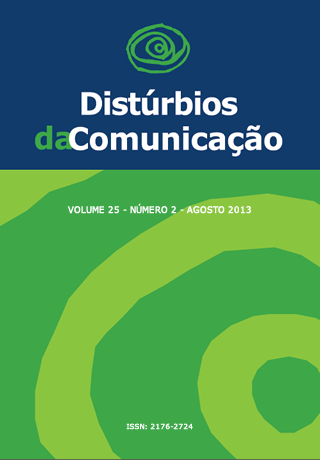Relationship between linguodental phonemes and mobility of tongue
Keywords:
speech disorders, child, articulation disordersAbstract
Introduction: This research aimed at relating the production of linguodental phonemes (/t/, /d/, /n/ e /l/) to the abilities concerning the mobility of the tongue in 125 children, male and female, aged 4:0 to 8:11. Method: The research was based on protocols from a specific database. Parents and/or guardians responsible for the subjects have authorized their participation by signing free and clarified consent terms. The subjects presented diagnosis of phonological disorder (PD) and alteration only in the stomatognathic system (SS). The results are related to the period before treatment. The evaluation of the phonological system has been made through the means of Phonological Evaluation of Children (FEC) and the gravity was analyzed through the percentage of consonants correct – Revised (PCC-R). Being so, the sample was divided into four main groups of segments (/t/, /d/, /n/ e /l/) subdivided in three groups: acquired, partially acquired and absent phoneme. In SS evaluation, alterations in the mobility of the tongue were verified, among many other aspects. A statistical analysis has been done through MannWhitney U test using Statística 9.0 program (5% in statistical significance). Results: it was possible to verify the nonexistence of statistical relation between the production of linguodental phonemes and the abilities concerning mobility of the tongue. Conclusion: these findings suggest that the production of the phonemes /t/, /d/, /n/ e /l/ and such abilities are not related.Downloads
Metrics
Downloads
Published
Issue
Section
License
Copyright (c) 2013 Marileda Barichello Gubiani, Marizete Ilha Ceron, Giséli Pereira de Freitas, Márcia Keske-Soares

This work is licensed under a Creative Commons Attribution 4.0 International License.









